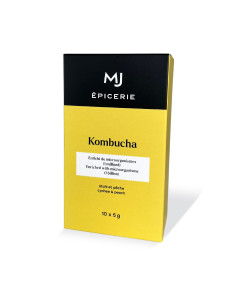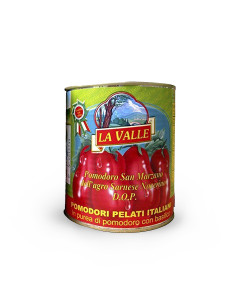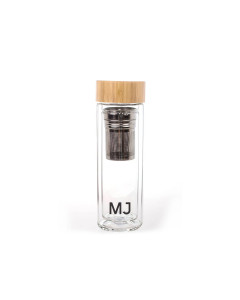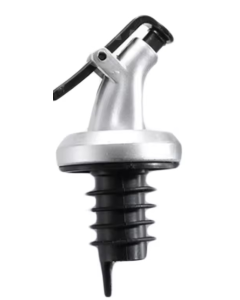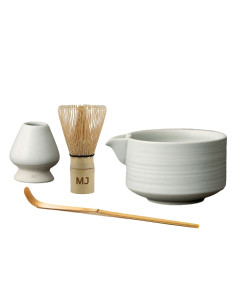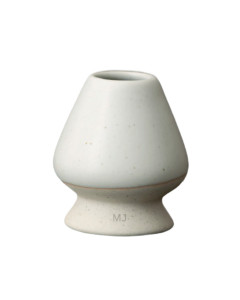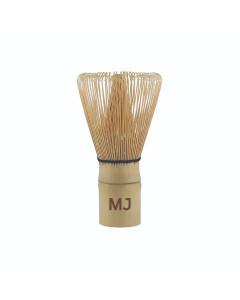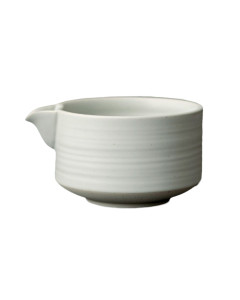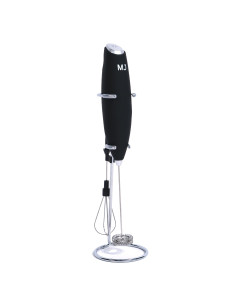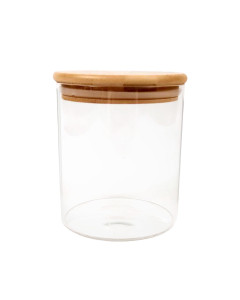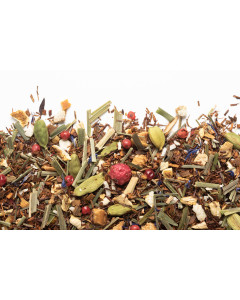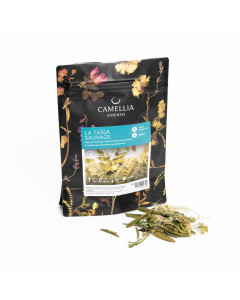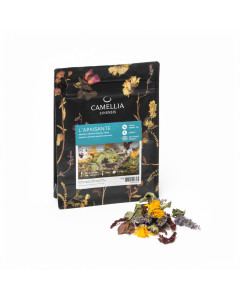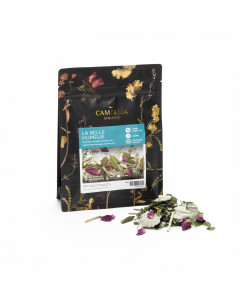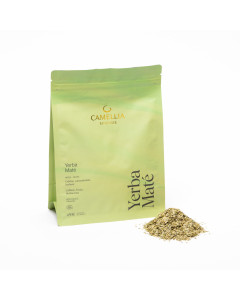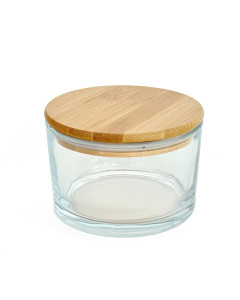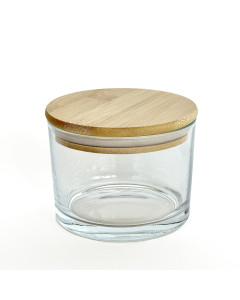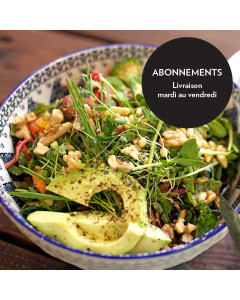
Why drink juice?
‘For me, juicing means giving my metabolism the nutrients from pounds of vegetables in around twenty minutes. The sensation is obviously wonderful.
With today's diet, we often lack the nutrients that are essential for a good quality of life and the energy we're looking for.
In the wonderful testimonials we've received about our juices, there's certainly that improved focus, that presence, that good sleep, obviously the energy felt instantly (and what can I say about the taste! Delectable), like a fountain of youth and the absence of cravings or sweet cravings because our cells find themselves well nourished. A man who claimed to be morbidly obese told me that he lost weight with my green juice, probably because his metabolism was able to get going again.
You can take it whenever you like, but I like to take it before my meal, precisely to feel that vitality, that shower of phytonutrients that replenish every one of my cells.'
- My Green Juice is my classic (and Martha's, her secret of youth she says). Spinach contains lutein and zeaxanthin (for the eyes). This juice contains vitamins A, C and K, which are necessary for vitamin D.
- Bêta is wonderful for the skin, as is celery, and is also good for beauty (in addition to its effect on the metabolism, of course). Sea Buckthorn alone (in Beta) is a nutritional treasure.
- L’Alcalin makes all the difference if it replaces wine: as well as warming, you can feel the flow to the brain, thanks to this beetroot, and nitric oxide, a powerful anti-ageing agent too.
- Orange juice is prepared with the peel for its hesperidin. The result is an explosion of flavour reminiscent of the real thing.
- Celery juice contains flavonoids and polyphenols (all our juices contain antioxidants that fight and protect against free radicals and oxidative stress). It also contains flavonoids (apigenin and luteolin) known for their anti-inflammatory effects. It can also stimulate the production of mucus in the stomach, which protects its walls. It also contains electrolytes and vitamin C to help produce collagen.
- My Yellow juice is my essential morning wake-up call - I couldn't do without it! It tones up my immune system and I've always appreciated the detox properties of lemon!
Discover our delicious juices
All our delicious juices are freshly cold-pressed, raw and not pasteurised, but rather pressurised, to retain up to 100% of their nutrients!
- Tonic yellow juice: lemon juice, cold-pressed turmeric juice, pineapple, ginger juice, cayenne pepper powder
- The Bouclier, Orange juice: freshly cold-pressed raw oranges to retain 87% to 100% of the active ingredients & nutrients
- Green juice: cucumber juice, celery juice, apple juice, ginger juice, lemon juice, kale juice, spinach juice
- Red juice, l'Alcalin: beetroot, apple juice, carrot, ginger juice, parsley, cold-pressed turmeric juice, lemon, cayenne pepper powder
- Bêta: tomatoes, sea buckthorn, carrots, grapefruit, apple, lemon, ginger
- Celery juice: apple, celery, lemon
Their ingredients - Science-backed properties
Pineaple
Pineapple juice contains a range of vitamins (A, B1, B6, C), beta-carotene (a precursor to vitamin A and antioxidant), and minerals that can help boost immunity.
It also contains enzymes, such as bromelain, whose studies describe these benefits :1
- Activities: anti-inflammatory, fibrinolytic, anti-edematous, antithrombotic, anticancer.
- Can help relieve symptoms of colds and allergies. 2
- Its content of vitamin C, antioxidants, beta-carotene, and vitamin A can help with vision.3
1. Pavan R, Jain S, Shraddha, Kumar A. Properties and therapeutic application of bromelain: a review. Biotechnol Res Int. 2012; 2012:976203. doi: 10.1155/2012/976203. Epub 2012 Dec 10. PMID: 23304525; PMCID: PMC3529416.
2. Secor ER Jr, Carson WF 4th, Cloutier MM, Guernsey LA, Schramm CM, Wu CA, Thrall RS. Bromelain exerts anti-inflammatory effects in an ovalbumin-induced murine model of allergic airway disease. Cell Immunol. 2005 Sep;237(1):68-75. doi: 10.1016/j.cellimm.2005.10.002. Epub 2005 Dec 6. PMID: 16337164; PMCID: PMC2576519.
3. de Koning-Backus APM, Buitendijk GHS, Kiefte-de Jong JC, Colijn JM, Hofman A, Vingerling JR, Haverkort EB, Franco OH, Klaver CCW. Intake of Vegetables, Fruit, and Fish is Beneficial for Age-Related Macular Degeneration. Am J Ophthalmol. 2019 Feb; 198:70-79. doi: 10.1016/j.ajo.2018.09.036. Epub 2018 Oct 10. PMID: 30312575.
See buckthorn
Sea buckthorn, a plant recognized for its versatility, as every part of the plant can be used, and a true nutritional treasure.1 It contains numerous active components, such as vitamins, carotenoids, polyphenols, fatty acids, and phytosterols.
In a study2, its numerous activities are described, such as:
- Antioxidant
- Anticancer
- Antihyperlipidemic
- Anti-obesity
- Anti-inflammatory
- Antimicrobial
- Antiviral
- Dermatological
- Neuroprotective
- Hepatoprotective
1. Li, T. S., & Schroeder, W.R. (1996). Sea Buckthorn (Hippophae rhamnoides L.): A Multipurpose Plant. HortTechnology horttech, 6(4), 370-380. Retrieved Jan 3, 2024, from https://doi.org/10.21273/HORTTECH.6.4.370
2. Wang Z, Zhao F, Wei P, Chai X, Hou G, Meng Q. Phytochemistry, health benefits, and food applications of sea buckthorn (Hippophae rhamnoides L.): A comprehensive review. Front Nutr. 2022 Dec 6; 9:1036295. doi: 10.3389/fnut.2022.1036295. PMID: 36562043; PMCID: PMC9763470.
Beetroot
Beetroot is a good source of folate, potassium, vitamin C, fiber, antioxidants, and nitrates. When nitrates are ingested, the body converts them into nitric oxide; according to some research1, this would help to:
- Increase endurance to help exercise longer
- Improve blood circulation
- Lower blood pressure
Also concerning nitrates: According to research carried out by Wake Forest University and published on the website of the scientific journal Nitric Oxide: Biology and Chemistry, beetroot's high nitrate content is thought to help blood flow to the brain, and daily consumption of beetroot juice may help preserve memory and prevent dementia associated with old age.2
Beet juice contains a large amount of ascorbic acid, polyphenols, and bio-accessible antioxidants.3
1. Wong TH, Sim A, Burns SF. The Effect of Beetroot Ingestion on High-Intensity Interval Training: A Systematic Review and Meta-Analysis. Nutrients. 2021 Oct 20;13(11):3674. doi: 10.3390/nu13113674. PMID: 34835931; PMCID: PMC8618171.
2. Presley TD, Morgan AR, Bechtold E, Clodfelter W, Dove RW, Jennings JM, Kraft RA, King SB, Laurienti PJ, Rejeski WJ, Burdette JH, Kim-Shapiro DB, Miller GD. Acute effect of a high nitrate diet on brain perfusion in older adults. Nitric Oxide. 2011 Jan 1;24(1):34-42. doi: 10.1016/j.niox.2010.10.002. Epub 2010 Oct 15. PMID: 20951824; PMCID: PMC3018552. https://pmc.ncbi.nlm.nih.gov/articles/PMC3018552/
3. Peter C. Wootton-Beard, Lisa Ryan, A beetroot juice shot is a significant and convenient source of bioaccessible antioxidants, Journal of Functional Foods, Volume 3, Issue 4, 2011, Pages 329-334, ISSN 1756-4646, https://doi.org/10.1016/j.jff.2011.05.007.
Carrot
The carrot is extremely nutritious, containing, among other things, potassium, vitamins A, C, and K. It provides carotenoids, such as lutein and zeaxanthin (predominant carotenoids that accumulate in the retina of the eye) which act as antioxidants in the body.1 Wonderful nutrients for eye health.2
Several studies indicate that the anti-inflammatory and antioxidant effects of carotenoids protect against non-alcoholic fatty liver disease.3,4
Vitamins A, B6, and C are known as anti-inflammatory vitamins due to their essential role in boosting immune function.5,6,7
Not to mention that vitamin C, a nutrient necessary for collagen production, can improve skin health. 8
1. Eisenhauer B, Natoli S, Liew G, Flood VM. Lutein and Zeaxanthin Food Sources, Bioavailability and Dietary Variety in Age-Related Macular Degeneration Protection. Nutrients. 2017 Feb 9;9(2):120. doi: 10.3390/nu9020120. PMID: 28208784; PMCID: PMC5331551.
2. Khoo HE, Ng HS, Yap WS, Goh HJH, Yim HS. Nutrients for Prevention of Macular Degeneration and Eye-Related Diseases. Antioxidants (Basel). 2019 Apr 2;8(4):85. doi: 10.3390/antiox8040085. PMID: 30986936; PMCID: PMC6523787.
3. Yilmaz B, Sahin K, Bilen H, Bahcecioglu IH, Bilir B, Ashraf S, Halazun KJ, Kucuk O. Carotenoids and non-alcoholic fatty liver disease. Hepatobiliary Surg Nutr. 2015 Jun;4(3):161-71. doi: 10.3978/j.issn.2304-3881.2015.01.11. PMID: 26151056; PMCID: PMC4465602.
4. Lee Y, Hu S, Park YK, Lee JY. Health Benefits of Carotenoids: A Role of Carotenoids in the Prevention of Non-Alcoholic Fatty Liver Disease. Prev Nutr Food Sci. 2019 Jun;24(2):103-113. doi: 10.3746/pnf.2019.24.2.103. Epub 2019 Jun 30. PMID: 31328113; PMCID: PMC6615349.
5. Huang Z, Liu Y, Qi G, Brand D, Zheng SG. Role of Vitamin A in the Immune System. J Clin Med. 2018 Sep 6;7(9):258. doi: 10.3390/jcm7090258. PMID: 30200565; PMCID: PMC6162863.
6. Qian B, Shen S, Zhang J, Jing P. Effects of Vitamin B6 Deficiency on the Composition and Functional Potential of T Cell Populations. J Immunol Res. 2017; 2017:2197975. doi: 10.1155/2017/2197975. Epub 2017 Mar 6. PMID: 28367454; PMCID: PMC5358464.
7. Carr AC, Maggini S. Vitamin C and Immune Function. Nutrients. 2017 Nov 3;9(11):1211. doi: 10.3390/nu9111211. PMID: 29099763; PMCID: PMC5707683.
8. Pullar JM, Carr AC, Vissers MCM. The Roles of Vitamin C in Skin Health. Nutrients. 2017 Aug 12;9(8):866. doi: 10.3390/nu9080866. PMID: 28805671; PMCID: PMC5579659.
Celery
Celery has many potential health benefits. Research suggests that certain phytochemical compounds extracted from celery (caffeic acid, ferulic acid, tannin, and saponin) have demonstrated properties:
- Anti-inflammatory1,2
- Antibacterial2
- Lowering blood sugar and serum lipid levels2
- Antioxydant3
- Antioxidants can help protect cells against molecules called free radicals, which play a role in heart disease, cancer, and the aging process.
1. Mencherini T, Cau A, Bianco G, Della Loggia R, Aquino RP, Autore G. An extract of Apium graveolens var. dulce leaves: structure of the major constituent, apiin, and its anti-inflammatory properties. J Pharm Pharmacol. 2007 Jun;59(6):891-7. doi: 10.1211/jpp.59.6.0016. PMID: 17637182.
2. Li MY, Hou XL, Wang F, Tan GF, Xu ZS, Xiong AS. Advances in the research of celery, an important Apiaceae vegetable crop. Crit Rev Biotechnol. 2018 Mar;38(2):172-183. doi: 10.1080/07388551.2017.1312275. Epub 2017 Apr 20. PMID: 28423952.
3. Kooti W, Daraei N. A Review of the Antioxidant Activity of Celery (Apium graveolens L). J Evid Based Complementary Altern Med. 2017 Oct;22(4):1029-1034. doi: 10.1177/2156587217717415. Epub 2017 Jul 13. PMID: 28701046; PMCID: PMC5871295.
Kale
Kale is a cruciferous vegetable often referred to as a superfood. It is highly valued for its rich nutritional profile, particularly due to its flavonoids, antioxidant enzymes, and other oligo-compounds.1
However, to avoid diminishing its antioxidant activity, it must be consumed raw. 2
Cruciferous vegetables, such as kale, are rich in:
- Glucosinolates
- Caroténoids
- Chlorophyll
- Ascorbic acid
All these nutrients play a major role in the modulation of lipid metabolism and therefore contribute to lowering the total cholesterol level in the blood, which could open new therapeutic intervention pathways to combat obesity.3
1. Šamec D, Urlić B, Salopek-Sondi B. Kale (Brassica oleracea var. acephala) as a superfood: Review of the scientific evidence behind the statement. Crit Rev Food Sci Nutr. 2019;59(15):2411-2422. doi: 10.1080/10408398.2018.1454400. Epub 2018 Apr 24. PMID: 29557674.
2. Sikora E, Bodziarczyk I. Composition and antioxidant activity of kale (Brassica oleracea L. var. acephala) raw and cooked. Acta Sci Pol Technol Aliment. 2012 Jul-Sep;11(3):239-48. PMID: 22744944.
3. Kuerban, A., Yaghmoor, S. S., Almulaiky, Y. Q., Ahmed Mohamed, Y., Iqbal Razvi, S. S., Nihal Hasan, M., Moselhy, S. S., Al-Ghafari, A. B., Alsufiani, H. M., Kumosani, T. A. and L-AL-Malki, A. (2017) “Therapeutic Effects of Phytochemicals of Brassicaceae for Management of Obesity”, Journal of Pharmaceutical Research International, 19(4), pp. 1–11. doi: 10.9734/JPRI/2017/37617.
Lemon
Lemon, like several citrus fruits, is known to contain bioactive compounds such as phenolic compounds, flavonoids, and vitamins (among the main ones, vitamin C (ascorbic acid)), which are believed to be responsible for a whole range of protective health benefits, among its activities:1,2
- Antioxydant
- Anti‐inflammatory
- Antitumor
- Antimicrobial
- Antifungal
- Protect cells from damage
- Produce collagen for the skin
- Absorb iron and support the immune system
- Lower blood pressure
A study revealed that hesperidin (flavonoids), a natural compound found in citrus fruits like lemon, showed a better balance of bone metabolism for bone health.3
Another study shows that hesperidin can lower blood sugar levels, thereby reducing the risk of diabetes. Moreover, the citric acid contained in lemon slows down the conversion of starch into sugar, thereby helping to reduce blood sugar spikes and manage weight.4
1. Oikeh EI, Omoregie ES, Oviasogie FE, Oriakhi K. Phytochemical, antimicrobial, and antioxidant activities of different citrus juice concentrates. Food Sci Nutr. 2015 Jul 30;4(1):103-9. doi: 10.1002/fsn3.268. PMID: 26788316; PMCID: PMC4708628.
2. C. Rekha, G. Poornima, M. Manasa, V. Abhipsa, J. Pavithra Devi, H.T., Vijay Kumar T.R., Prashith Kekuda, Ascorbic Acid, Total Phenol Content and Antioxidant Activity of Fresh Juices of Four Ripe and Unripe Citrus Fruits, Chem Sci Trans., 2012, 1(2), 303-310 DOI:10.7598/cst2012.182.
3. Sandra Maria Sacco, Marie-Noëlle Horcajada, Elizabeth Offord, Phytonutrients for bone health during ageing, Nutraceuticals themed section, First published: 05 February 2013, https://doi.org/10.1111/bcp.12033
4 Aruoma OI, Landes B, Ramful-Baboolall D, Bourdon E, Neergheen-Bhujun V, Wagner KH, Bahorun T. Functional benefits of citrus fruits in the management of diabetes. Prev Med. 2012 May;54 Suppl: S12-6. doi: 10.1016/j.ypmed.2012.02.012. Epub 2012 Feb 25. PMID: 22373887.
Cucumber
Cucumber contains many compounds such as different types of flavonoids like apigenin, diosmetin, fisetin, luteolin, quercetin, kaempferol, luteolin, naringenin, theaflavanoside I, and vicenin. It also contains different types of lignans such as pinoresinol, lariciresinol, secoisolariciresinol, and triterpenes like cucurbitacin A, cucurbitacin B, cucurbitacin C, cucurbitacin D.1
Also, small amounts of vitamin K, vitamin C, and magnesium, potassium, manganese, and vitamin A.
The current phytochemical and pharmacological knowledge available on this well-known plant has been explored in a review, highlighting several promising aspects for cucumber research.2
It is attributed beneficial activities:
- Antidiabetic
- Hypolipidemic
- Helps reduce blood pressure 3
- Antimicrobial4
- Can act against acidity, resist changes in pH, and have good carminative and antacid potential4
- Improve hair growth and soothe the skin, reduce eye swelling5
- Antioxydant 6
1. Mukherjee PK, Nema NK, Maity N, Sarkar BK. Phytochemical and therapeutic potential of cucumber. Fitoterapia. 2013 Jan; 84:227-36. doi: 10.1016/j.fitote.2012.10.003. Epub 2012 Oct 23. PMID: 23098877.
2. El-Saadony MT, Elsadek MF, Mohamed AS, Taha AE, Ahmed BM, Saad AM. Effects of Chemical and Natural Additives on Cucumber Juice's Quality, Shelf Life, and Safety. Foods. 2020 May 15;9(5):639. doi: 10.3390/foods9050639. PMID: 32429212; PMCID: PMC7281498.
3. Candra Kusuma, Erna, Anna. The effect of cucumber juice (Cucumis Sativus) to blood pressure drop in elderly hypertension patients at Tresna Werdha Budi Sejahtera social institution of Banjarbaru South Borneo 2017 Nursing Science Bachelor Study Program Of The Health Science Institute Cahaya Bangsa Banjarmasin. https://osf.io/cmh97/download
4. A.Sood, P. Kaur and R. Gupta.Phytochemical screening and antimicrobial assay of various seed extracts from the Cucurbitaceae family.International Journal of Applied Biology and Pharmaceutical Technology, 3(3): 401-409, 2012
5. Dr.Anu Shrivastava, Dr.Shikha Roy, Cucurbitaceae: A Ethnomedicinally Important Vegetable Family. Journal of Medicinal Plants Studies Year: 2013, Volume: 1, Issue: 4 First page: (16) Last page: (20) ISSN: 2320-3862 https://www.plantsjournal.com/vol1Issue1/Issue_july_2013/7.1.pdf
6. H.Heidari, M.Kamalinejad, M.Eskandari.Hepatoprotective activity of Cucumissativus against cumene hydroperoxide-induced oxidative stress. Pharmaceutical Sciences Research; 7(5): 936-939, 2012
Turmeric
Turmeric has long been considered a medicinal plant in traditional Indian medicine.
Its yellow color is mainly due to the presence of three major pigments: curcumin 1,7-bis(4-hydroxy-3-methoxyphenyl) -1,6-heptadiene-3,5-dione), demethoxycurcumin, and bis-demethoxycurcumin.
- These curcuminoids are recognized for their high antioxidant activities.1
- It has a rich content of polyphenols 2
- A study provides scientific evidence in favor of the combined use of ginger and turmeric to relieve inflammatory processes.2
1. Isik, Beyza & Altin, Gokce & Yalcinkaya, Ipek & Demircan, Evren & Karaca, Asli & Ozcelik, Beraat. (2018). Evaluation of the phenolic composition of curcumin from different turmeric (Curcuma Longa L.) extracts: A comprehensive study based on chemical turmeric extract, turmeric tea and fresh turmeric juice. https://www.researchgate.net/publication/328274721
2. Zhou X, Afzal S, Wohlmuth H, Münch G, Leach D, Low M, Li CG. Synergistic Anti-Inflammatory Activity of Ginger and Turmeric Extracts in Inhibiting Lipopolysaccharide and Interferon-γ-Induced Proinflammatory Mediators. Molecules. 2022 Jun 16;27(12):3877. doi: 10.3390/molecules27123877. PMID: 35745000; PMCID: PMC9229778.
Spinach
Spinach is a treasure in terms of nutrition, as it is rich in vitamins, minerals, and antioxidants.
We find in spinach:
- A good source of antioxidants such as lutein, beta-carotene, coumaric acid, violaxanthin, and ferulic acid.1 By neutralizing unstable molecules called free radicals, antioxidants thus protect against oxidative stress and chronic diseases.2
- Two other antioxidants (lutein and zeaxanthin), as well as Vitamin A, are necessary for eye health.3,4
- The nitrates contained in spinach can help dilate blood vessels, thereby lowering blood pressure and increasing blood circulation.5
- Vitamin C, which can increase iron absorption and even help prevent hair loss associated with iron deficiency.6
1. Bunea A, Andjelkovic M, Socaciu C, Bobis O, Neacsu M, Verhé R, Camp JV. Total and individual carotenoids and phenolic acids content in fresh, refrigerated and processed spinach (Spinacia oleracea L.). Food Chem. 2008 May 15;108(2):649-56. doi: 10.1016/j.foodchem.2007.11.056. Epub 2007 Nov 29. PMID: 26059144.
2. Pham-Huy LA, He H, Pham-Huy C. Free radicals, antioxidants in disease and health. Int J Biomed Sci. 2008 Jun;4(2):89-96. PMID: 23675073; PMCID: PMC3614697.
3. Abdel-Aal el-SM, Akhtar H, Zaheer K, Ali R. Dietary sources of lutein and zeaxanthin carotenoids and their role in eye health. Nutrients. 2013 Apr 9;5(4):1169-85. doi: 10.3390/nu5041169. PMID: 23571649; PMCID: PMC3705341.
4. Faustino JF, Ribeiro-Silva A, Dalto RF, Souza MM, Furtado JM, Rocha Gde M, Alves M, Rocha EM. Vitamin A and the eye: an old tale for modern times. Arq Bras Oftalmol. 2016 Feb;79(1):56-61. doi: 10.5935/0004-2749.20160018. PMID: 26840172.
5. Brkić D, Bošnir J, Bevardi M, Bošković AG, Miloš S, Lasić D, Krivohlavek A, Racz A, Ćuić AM, Trstenjak NU. Nitrate in leafy green vegetables ans estimated intake. Afr J Tradit Complement Altern Med. 2017 Mar 1;14(3):31-41. doi: 10.21010/ajtcam. v14i3.4. PMID: 28480414; PMCID: PMC5412236.
6. Almohanna HM, Ahmed AA, Tsatalis JP, Tosti A. The Role of Vitamins and Minerals in Hair Loss: A Review. Dermatol Ther (Heidelb). 2019 Mar;9(1):51-70. doi: 10.1007/s13555-018-0278-6. Epub 2018 Dec 13. PMID: 30547302; PMCID: PMC6380979.
Ginger
Ginger is one of the most consumed spices in the world. Very popular for a long time, particularly in Chinese medicine.
Its particularly well-known benefits are:
- Anti-inflammatory and analgesic effects due to its content of [6]-gingerol 1,2
- Relief from indigestion and nausea3
- Treat colds, migraines, and hypertension4
- Antioxidant5 and immunomodulatory6 effects
- Effective antimicrobial and antiviral agent6
- Preventive anticancer activity7
1. Grzanna R, Lindmark L, Frondoza CG. Ginger--an herbal medicinal product with broad anti-inflammatory actions. J Med Food. 2005 Summer;8(2):125-32. doi: 10.1089/jmf.2005.8.125. PMID: 16117603.
2. Young HY, Luo YL, Cheng HY, Hsieh WC, Liao JC, Peng WH. Analgesic and anti-inflammatory activities of [6]-gingerol. J Ethnopharmacol. 2005 Jan 4;96(1-2):207-10. doi: 10.1016/j.jep.2004.09.009. PMID: 15588672.
3. Ernst E, Pittler MH. Efficacy of ginger for nausea and vomiting: a systematic review of randomized clinical trials. Br J Anaesth. 2000 Mar;84(3):367-71. doi: 10.1093/oxfordjournals.bja.a013442. PMID: 10793599.
4. Ali BH, Blunden G, Tanira MO, Nemmar A. Some phytochemical, pharmacological and toxicological properties of ginger (Zingiber officinale Roscoe): a review of recent research. Food Chem Toxicol. 2008 Feb;46(2):409-20. doi: 10.1016/j.fct.2007.09.085. Epub 2007 Sep 18. PMID: 17950516.
5. Aeschbach R, Löliger J, Scott BC, Murcia A, Butler J, Halliwell B, Aruoma OI. Antioxidant actions of thymol, carvacrol, 6-gingerol, zingerone and hydroxytyrosol. Food Chem Toxicol. 1994 Jan;32(1):31-6. doi: 10.1016/0278-6915(84)90033-4. PMID: 7510659.
6. Chrubasik S, Pittler MH, Roufogalis BD. Zingiberis rhizoma: a comprehensive review on the ginger effect and efficacy profiles. Phytomedicine. 2005 Sep;12(9):684-701. doi: 10.1016/j.phymed.2004.07.009. PMID: 16194058.
7. Shukla Y, Singh M. Cancer preventive properties of ginger: a brief review. Food Chem Toxicol. 2007 May;45(5):683-90. doi: 10.1016/j.fct.2006.11.002. Epub 2006 Nov 12. PMID: 17175086.
Orange
Orange juice contains numerous nutrients, such as potassium and folates; its popularity is particularly attributed to its high vitamin C content as it acts as:
- Powerful antioxidant, contributing to immune defense1
- Can help prevent and treat respiratory and systemic infections1
- Playing an important role in bone formation, wound healing, and maintaining healthy gums2
- Having effects on markers of inflammation and oxidation 3,4
A narrative review of the effects of citrus juices and their bioactive components on inflammation and immunity reported that human trials, including those with hesperidin, reported reductions in inflammatory markers. In humans, orange juice has been shown to limit postprandial inflammation induced by a carbohydrate-rich meal. Daily consumption of orange juice for several weeks has been reported to reduce markers of inflammation, in particular C-reactive protein, as confirmed by a recent meta-analysis.5
In short, the micronutrients and other bioactives present in citrus juices have established roles in controlling oxidative stress and inflammation, as well as supporting innate and acquired immune responses. The effects of orange juice on innate and acquired immunity require further exploration in well-designed trials in appropriate population subgroups such as the elderly.
1. Carr, A.C.; Maggini, S. Vitamin C and Immune Function. Nutrients 2017, 9, 1211. https://doi.org/10.3390/nu9111211
2. Chambial S, Dwivedi S, Shukla KK, John PJ, Sharma P. Vitamin C in disease prevention and cure: an overview. Indian J Clin Biochem. 2013 Oct;28(4):314-28. doi: 10.1007/s12291-013-0375-3. Epub 2013 Sep 1. PMID: 24426232; PMCID: PMC3783921.
3. Pham-Huy LA, He H, Pham-Huy C. Free radicals, antioxidants in disease and health. Int J Biomed Sci. 2008 Jun;4(2):89-96. PMID: 23675073; PMCID: PMC3614697.
4. Cara KC, Beauchesne AR, Wallace TC, Chung M. Effects of 100% Orange Juice on Markers of Inflammation and Oxidation in Healthy and At-Risk Adult Populations: A Scoping Review, Systematic Review, and Meta-analysis. Adv Nutr. 2022 Feb 1;13(1):116-137. doi: 10.1093/advances/nmab101. PMID: 34634114; PMCID: PMC8803484.
5. Miles EA, Calder PC. Effects of Citrus Fruit Juices and Their Bioactive Components on Inflammation and Immunity: A Narrative Review. Front Immunol. 2021 Jun 24;12:712608. doi: 10.3389/fimmu.2021.712608. PMID: 34249019; PMCID: PMC8264544. https://pmc.ncbi.nlm.nih.gov/articles/PMC8264544/pdf/fimmu-12-712608.pdf
Grapefruit
Grapefruit provides a significant amount of fiber, vitamins, minerals, and antioxidants. Research shows that grapefruit can have powerful health benefits, and it is particularly appreciated for:
- Its high vitamin C content, a vitamin known for its antioxidant properties, which can reduce or prevent infections caused by bacteria, viruses, and protozoa. It has been shown that vitamin C helps people recover more quickly from a cold.1
- Vitamin C can help protect cells from damage that often leads to heart disease and cancer.2
- For its small amounts of zinc and iron, elements that work together in the body to promote the functioning of the immune system and also contribute to maintaining skin integrity, and act as a protective barrier against infections.3,4
1. Hemilä H. Vitamin C and Infections. Nutrients. 2017 Mar 29;9(4):339. doi: 10.3390/nu9040339. PMID: 28353648; PMCID: PMC5409678.
2. Pawlowska E, Szczepanska J, Blasiak J. Pro- and Antioxidant Effects of Vitamin C in Cancer in correspondence to Its Dietary and Pharmacological Concentrations. Oxid Med Cell Longev. 2019 Dec 24;2019:7286737. doi: 10.1155/2019/7286737. PMID: 31934267; PMCID: PMC6942884.
3. Wessels I, Maywald M, Rink L. Zinc as a Gatekeeper of Immune Function. Nutrients. 2017 Nov 25;9(12):1286. doi: 10.3390/nu9121286. PMID: 29186856; PMCID: PMC5748737.
4. Manfred Nairz, Günter Weiss,Iron in infection and immunity, Molecular Aspects of Medicine, Volume 75, 2020, 100864, ISSN 0098-2997, https://doi.org/10.1016/j.mam.2020.100864.
Parsley
Parsley is much more than a decorative food on a plate. It contains numerous components, the main ones being coumarins, furocoumarins, ascorbic acid, carotenoids, flavonoids, apiol, terpenes, phthalides, and tocopherol. It is therefore attributed numerous health benefits:1
- Antimicrobial
- Anti-anemic
- Menorrhagic
- Anticoagulant
- Antihyperlipidemic
- Antihepatotoxic
- Antihypertensive
- Diuretic
- Hypoglycemic
- Antioxidant
- Estrogenic
Among other things, parsley contains vitamin K, which is important because it promotes blood clotting and contributes to bone health.2 While apiol is used to treat urinary tract infections, general infection prevention, and kidney stones. 3
1. Mahmood S, Hussain S, Malik F. Critique of medicinal conspicuousness of Parsley (Petroselinum crispum): a culinary herb of Mediterranean region. Pak J Pharm Sci. 2014 Jan;27(1):193-202. PMID: 24374449.
2. Akbari S, Rasouli-Ghahroudi AA. Vitamin K and Bone Metabolism: A Review of the Latest Evidence in Preclinical Studies. Biomed Res Int. 2018 Jun 27;2018:4629383. doi: 10.1155/2018/4629383. PMID: 30050932; PMCID: PMC6040265.
3. Dr Puneeta Ajmera, Sumati Kalani, Dr Luxita Sharma. Parsley-health benefits and side effects. Int J Physiol Nutr Phys Educ 2019;4(1):1236-1242.
Cayenne pepper
Thanks to a compound called capsaicin, this pepper has a moderately spicy and hot flavor. The fruits of the chili pepper have several pharmacological potentials as a tonic, antiseptic, and stimulant agent, to treat dyspepsia, appetite, and flatulence, and to improve digestion and circulation.1 Thanks to a compound called capsaicin, this pepper has a moderately spicy and hot flavor. The fruits of the chili pepper have several pharmacological potentials as a tonic, antiseptic, and stimulant agent, to treat dyspepsia, appetite, and flatulence, and to improve digestion and circulation.2
Cayenne pepper provides nutrients such as:
- Vitamin B6
- Vitamin K
- Potassium
- Magnesium
- It is packed with vitamin C, essential for immune health, also playing a crucial role in collagen production, iron absorption, and neurotransmitter synthesis. 3
1. Mandal SK, Rath SK, Logesh R, Mishra SK, Devkota HP, Das N. Capsicum annuum L. and its bioactive constituents: A critical review of a traditional culinary spice in terms of its modern pharmacological potentials with toxicological issues. Phytother Res. 2023 Mar;37(3):965-1002. doi: 10.1002/ptr.7660. Epub 2022 Oct 18. PMID: 36255140.
2. Yoneshiro T, Aita S, Kawai Y, Iwanaga T, Saito M. Nonpungent capsaicin analogs (capsinoids) increase energy expenditure through the activation of brown adipose tissue in humans. Am J Clin Nutr. 2012 Apr;95(4):845-50. doi: 10.3945/ajcn.111.018606. Epub 2012 Feb 29. PMID: 22378725.
3. Abdullah M, Jamil RT, Attia FN. Vitamin C (Ascorbic Acid) [Updated 2023 May 1]. In: StatPearls [Internet]. Treasure Island (FL): StatPearls Publishing; 2023 Jan-. Available from: https://www.ncbi.nlm.nih.gov/books/NBK499877/
Apple
The apple contains vitamin A, vitamin E, niacin, folic acid, pantothenic acid, choline, betaine, calcium, iron, magnesium, and phosphorus.
Apple juice also contains a significant amount of vitamin C (ascorbic acid), an essential antioxidant that protects against oxidative stress, inflammation, and helps strengthen the body's immune system. Moreover, a review suggests that, in 20 studies, apple juice consumed in moderation has had positive effects on markers of cardiovascular disease risk. (particularly on oxidative stress). 1
A trend towards a decrease in triglyceride levels was also observed in those who consumed juice rich in polyphenols.1,2
Polyphenols could also reduce oxidative cellular damage in the intestine,3,4 they would have both protective and therapeutic effects in the management of inflammatory bowel diseases.5
Another study concluded that the consumption of antioxidant-rich foods such as apples can prevent the decline in cognitive performance that accompanies nutritional and genetic deficiencies and aging.6
1. Vallée Marcotte B, Verheyde M, Pomerleau S, Doyen A, Couillard C. Health Benefits of Apple Juice Consumption: A Review of Interventional Trials on Humans. Nutrients. 2022 Feb 16;14(4):821. doi: 10.3390/nu14040821. PMID: 35215471; PMCID: PMC8879758. https://www.ncbi.nlm.nih.gov/pmc/articles/PMC8879758/
2. Hyson D, Studebaker-Hallman D, Davis PA, Gershwin ME. Apple juice consumption reduces plasma low-density lipoprotein oxidation in healthy men and women. J Med Food. 2000 Winter;3(4):159-66. doi: 10.1089/jmf.2000.3.159. PMID: 19236172.
3. Schaefer S, Baum M, Eisenbrand G, Dietrich H, Will F, Janzowski C. Polyphenolic apple juice extracts and their major constituents reduce oxidative damage in human colon cell lines. Mol Nutr Food Res. 2006 Jan;50(1):24-33. doi: 10.1002/mnfr.200500136. PMID: 16317784.
4. Shuhan Feng, Jianyong Yi*, Xuan Li, Xinye Wu, Yuanyuan Zhao, Youchuan Ma and Jinfeng Bi. J. Agric. Food Chem. 2021, 69, 1, 7–27. Publication Date:January 4, 2021. https://doi.org/10.1021/acs.jafc.0c05481
5. Farzaei MH, Rahimi R, Abdollahi M. The role of dietary polyphenols in the management of inflammatory bowel disease. Curr Pharm Biotechnol. 2015;16(3):196-210. doi: 10.2174/1389201016666150118131704. PMID: 25601607.
6. Chan A, Graves V, Shea TB. Apple juice concentrate maintains acetylcholine levels following dietary compromise. J Alzheimers Dis. 2006 Aug;9(3):287-91. doi: 10.3233/jad-2006-9308. PMID: 16914839.
Tomatoes
The tomato is a very interesting food from a nutritional standpoint, as it is rich in vitamin C, potassium, phosphorus, calcium, magnesium, and sodium. Moreover, it contains iron, zinc, thiamine, riboflavin, niacin, folate, and vitamins A, B6, E, and K.
Tomato juice and the tomato itself are also rich in lycopene, several other carotenoids, and a large number of phytochemical compounds, effective supplements for many health issues. The tomato can:
- Helps with weight loss1
- Decreases LDL cholesterol levels and increases LDL cholesterol levels 2,3
- Support cardiovascular health4
- Reduce inflammation4
- Aid vision5
- Strengthen bones6
- Could also offer protection against lung cancer 7
- May help stimulate the cleansing of the kidneys and liver 8
1. Ghavipour M, Saedisomeolia A, Djalali M, Sotoudeh G, Eshraghyan MR, Moghadam AM, Wood LG. Tomato juice consumption reduces systemic inflammation in overweight and obese females. Br J Nutr. 2013 Jun;109(11):2031-5. doi: 10.1017/S0007114512004278. Epub 2012 Oct 15. PMID: 23069270.
2. Silaste ML, Alfthan G, Aro A, Kesäniemi YA, Hörkkö S. Tomato juice decreases LDL cholesterol levels and increases LDL resistance to oxidation. Br J Nutr. 2007 Dec;98(6):1251-8. doi: 10.1017/S0007114507787445. Epub 2007 Jul 9. PMID: 17617941.
3. Sanjiv Agarwal & A. Venketeshwer Rao. Tomato lycopene and low-density lipoprotein oxidation: A human dietary intervention study. Published: October 1998. Volume 33, pages 981–984, (1998)
4. J E Upritchard, W H Sutherland, J I Mann; Effect of supplementation with tomato juice, vitamin E, and vitamin C on LDL oxidation and products of inflammatory activity in type 2 diabetes. Diabetes Care 1 June 2000; 23 (6): 733–738. https://doi.org/10.2337/diacare.23.6.733
5. John T Landrum, Richard A Bone, Lutein, Zeaxanthin, and the Macular Pigment, Archives of Biochemistry and Biophysics, Volume 385, Issue 1, 2001, Pages 28-40, ISSN 0003-9861, https://doi.org/10.1006/abbi.2000.2171.
6. Mackinnon ES, Rao AV, Josse RG, Rao LG. Supplementation with the antioxidant lycopene significantly decreases oxidative stress parameters and the bone resorption marker N-telopeptide of type I collagen in postmenopausal women. Osteoporos Int. 2011 Apr;22(4):1091-101. doi: 10.1007/s00198-010-1308-0. Epub 2010 Jun 15. PMID: 20552330.
7. Palozza P, Simone RE, Catalano A, Mele MC. Tomato lycopene and lung cancer prevention: from experimental to human studies. Cancers (Basel). 2011 May 11;3(2):2333-57. doi: 10.3390/cancers3022333. PMID: 24212813; PMCID: PMC3757421.
8. Bhowmik, Debjit & Kumar, K & Paswan, Shravan & Srivastava, Shweta. (2012). Tomato-A Natural Medicine and Its Health Benefits INTRODUCTION: Tomatoes are a member of.
Mint
For centuries, mint has been used and consumed around the world as a food and medicinal plant. Its fresh, powerful flavour has won over more than one person!
Mint is an excellent health ally, as it aids digestion; its leaves, which have antispasmodic properties, help to:
- Calm digestive problems
- Reduce cramps and relieve nausea and bloating
-
They are rich in vitamins, minerals and antioxidants.
Other beneficial properties include: 1
- Anti-obesity
- Antimicrobial
- Anti-inflammatory
- Anti-diabetic
- Cardioprotective, due to its antioxidant potential thanks to its high rosmarinic acid content, which also gives it antiviral and anti-allergic properties.2
1. Tafrihi M, Imran M, Tufail T, Gondal TA, Caruso G, Sharma S, Sharma R, Atanassova M, Atanassov L, Valere Tsouh Fokou P, Pezzani R. The Wonderful Activities of the Genus Mentha: Not Only Antioxidant Properties. Molecules. 2021 Feb 20;26(4):1118. doi: 10.3390/molecules26041118. PMID: 33672486; PMCID: PMC7923432. https://pmc.ncbi.nlm.nih.gov/articles/PMC7923432/pdf/molecules-26-01118.pdf
2. Shekarchi M, Hajimehdipoor H, Saeidnia S, Gohari AR, Hamedani MP. Comparative study of rosmarinic acid content in some plants of Labiatae family. Pharmacogn Mag. 2012 Jan;8(29):37-41. doi: 10.4103/0973-1296.93316. PMID: 22438661; PMCID: PMC3307200. https://pmc.ncbi.nlm.nih.gov/articles/PMC3307200/pdf/PM-8-37.pdf


Also explore our MJ Grocery section to discover our wide selection of quality products.
Maison Jacynthe disclaims all liability. All the information contained on this page is not intended to replace a justified allopathic treatment or to disregard the expertise of the medical profession. It is up to each individual to take responsibility for their own health, to inform themselves and to make the necessary changes to improve their condition. Therapeutic supervision by a qualified health professional is obviously suggested.

